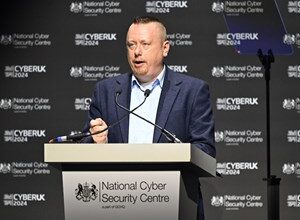Strategies for preventing AI misuse in cybersecurity

As organizations increasingly adopt AI, they face unique challenges in updating AI models to keep pace with evolving threats while ensuring seamless integration into existing cybersecurity frameworks.
In this Help Net Security interview, Pukar Hamal, CEO at SecurityPal, discusses the integration of AI tools in cybersecurity.
What are organizations’ main challenges when integrating AI into their cybersecurity infrastructures?
Companies are like organisms: constantly changing every second. Given the dynamic nature of companies, keeping AI models up to date with the latest information becomes a unique challenge. Companies must have a robust understanding of themselves and also keep up in the race against emerging threats.
Additionally, a great deal of thought and preparation is required to ensure that AI systems are seamlessly integrated into the cybersecurity framework without disrupting ongoing operations. Organizations are run by people, and no matter how good the technology or framework is, the bottleneck of aligning people to these shared goals remains.
The complexity of this daunting task is compounded by needing to overcome compatibility issues with legacy systems, address scalability to cope with vast data volumes, and invest heavily in cutting-edge technology and skilled personnel.
How do we balance the accessibility of powerful AI tools with the security risks they potentially pose, especially regarding their misuse?
It’s a trade-off between speed and security. If systems are more accessible, organizations can move faster. However, the scope for risk and attack expands as well.
It’s a constant balancing act that requires security and GRC organizations to start with robust governance frameworks that establish clear rules of engagement and strict access controls to prevent unauthorized use. Employing a layered security approach, including encryption, behavior monitoring, and automatic alerts for unusual activities, helps strengthen defenses. Also, enhancing transparency in AI operations through explainable AI techniques allows for better understanding and control of AI decisions, which is crucial for preventing misuse and building trust.
In any organization large or complex enough, you have to accept that there will be misuse at some point. What matters ishow quickly you react, how complete your remediation strategies are, and how you share that knowledge across the rest of the organization to ensure that the same pattern of misuse is not repeated.
Can you discuss some examples of advanced AI-powered threats and the innovative solutions that counteract them?
No technology, including AI, is inherently good or bad. It’s all about how we use them. And yes, while AI is very powerful in helping us speed up everyday tasks, the bad guys can use it to do the same.
We will see phishing emails that are more convincing and more dangerous than ever before thanks to AI’s ability to mimic humans. If you combine that with multi-modal AI models that can create deepfake audio and video, it’s not impossible that we’ll need two-step verification for every virtual interaction with another person.
It’s not about where the AI technology is today, it’s about how sophisticated it gets in a few years if we remain on this same trajectory.
Fighting these sophisticated threats requires equally advanced AI-driven behavioral analytics to spot anomalies in communication and AI-augmented digital content verification tools to spot deepfakes. Threat intelligence platforms that utilize AI to sift through and analyze vast amounts of data to predict and neutralize threats before they strike are another robust defense.
However, tools are limited in their usefulness. I believe we will see the rise of in-person and face-to-face interactions for highly sensitive workflows and data. The response will be that individuals and organizations will want to have more control over every interaction so they can verify themselves.
What role do training and awareness play in maximizing the effectiveness of AI tools in cybersecurity?
Training and awareness are critical as they empower teams to effectively manage and utilize AI tools. They transform teams from good to great. Regularly updated training sessions equip cybersecurity teams with knowledge about the latest AI tools and threats, enabling them to leverage these tools more effectively. Extending awareness programs across the organization can educate all employees about potential security threats and proper data protection practices, significantly bolstering the organization’s overall defense mechanisms.
With the rapid adoption of AI in cybersecurity, what ethical concerns should professionals be aware of, and how can these be mitigated?
Ethical navigation in the rapidly evolving AI landscape is critical. Key concerns include ensuring privacy, as AI systems frequently process extensive personal data. Strict adherence to regulations like GDPR is paramount to maintaining trust. Additionally, the risk of bias in AI decision-making is non-trivial and requires a commitment to diversity in training datasets and ongoing audits for fairness.
Transparency about AI’s role and limitations in security systems also helps maintain public trust, ensuring stakeholders are comfortable and informed about how AI is being used to secure their data. This ethical vigilance is essential not just for compliance but also for fostering a culture of trust and integrity within and outside the organization.



